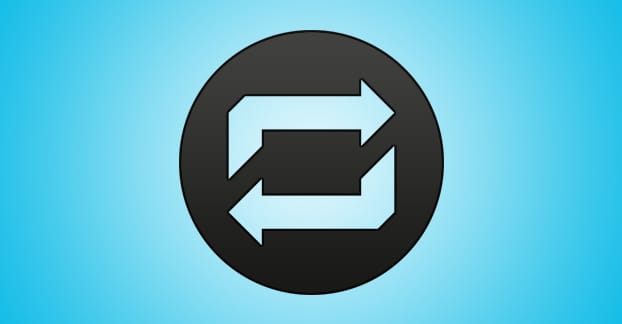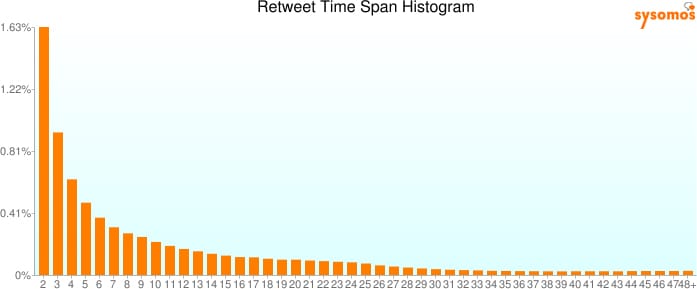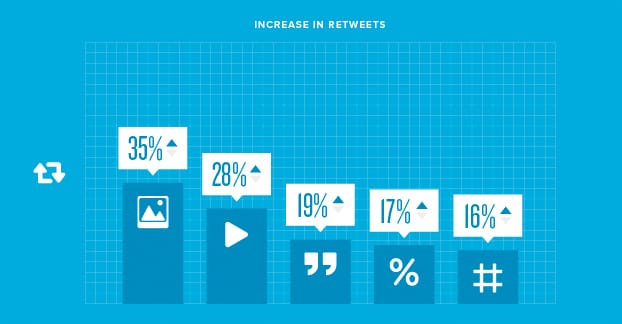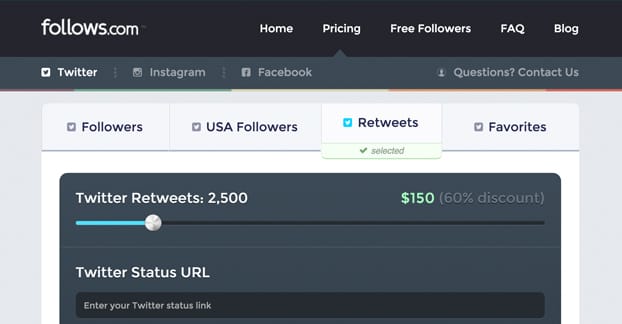Twitter itself can be great for raising awareness, building a community, participating in activism, and driving traffic. However, it can also be a huge echo chamber with virtually nothing to show for it, if you have no audience, or the wrong kind of audience.
So, let’s work backwards from the question posed in the title. Is buying retweets worth it for driving traffic? Your goal in this scenario is to drive traffic to a website, which means you need to have a compelling tweet and related URL in that tweet. You want to send more traffic to that URL.
More retweets does seem like it would send more traffic to the URL, right?
Here’s one scenario: if you have, say, a 15% click-through rate, showing your tweet to 100 people will get you 15 hits. If you buy 10,000 retweets, that tweet would suddenly be sending 1,500 hits your way.
But wait, that math is a little wrong, isn’t it? 100 people seeing your tweet might just be your own audience, or even just a fraction of that audience. 1 retweet has the potential to show your tweet to tens or hundreds more people easily. A single retweet from an influencer could send your tweet to tens of thousands more people. In another scenario, buying 10,000 retweets, if each of the accounts retweeting you has 300 distinct followers, would get you 3,000,000 more views. A 15% click through rate on that would be nearly half a million more hits to your website. That’s a huge amount of traffic for what most businesses seem to charge for retweets.
In scenario #3, imagine that 10,000 retweets costs you $300. That’s a significant initial investment. But, let’s take a look at your potential conversions. Your average traffic cart value could be $10. Your average conversion rate from traffic reaching your site is, say, 5%. That’s fairly run of the mill. So, now you have 450,000 new viewers at a 5% conversion rate. That’s a total of 22,500 conversions. At $10 each, that just earned you $225,000 for an initial investment of $300. That’s one hell of a return, and that’s something a lot of people only dream of being able to handle.
Tracking your conversion rate is very important. Click-through rate and the size of your campaign is equally as important.
The Problem with Buying Retweets
Of course, there are about a dozen different possible points of failure along this process. Let’s simplify each step and figure out where it can go wrong, shall we?
Step 1: Having a compelling tweet. This is perhaps the least important factor here, but it’s certainly important. Your tweet needs to at least look like it could gain that number of retweets organically, rather than through a paid promotion. It also looks pretty unreasonable for your average tweet to get ~15 retweets and one of them to suddenly get 10,015. If you’re going to buy retweets, you really, really need to build up to it gradually and work to increase your follower count and audience as well.
Step 2: Paying a company that delivers retweets. This has a few different possible points of failure. For one thing, the company might be a scam and just doesn’t deliver anything. That’s a waste of $300 and absolutely nothing to show for it. You’re certainly not getting your money back.
If they take your money and do deliver, are you really getting 10,000 retweets? Or are you getting 8,500 and an excuse about how it’s a fickle world and that they can’t always promise the exact number quoted? It’s just another, softer version of the same scam.
Step 3: Having retweets from accounts with 300 average unique followers. This also has a couple different possible points of failure. For one thing, are any of the accounts that retweet you real? If you’re paying $300 for your retweets, they better be. This is why you never go for the deals where you can pay $5 per thousand, or anything that utterly cheap. It’s guaranteed that the seller is using bots, and those bot accounts aren’t going to do much of anything for you.
Then the plan for profits makes a hefty assumption; that each account that retweets your tweet has around 300 unique followers. I pull the number 300 from statistics that show the average Twitter account has about that many, but the statistics are kind of misleading. Remember, the average includes people like Katy Perry and Barack Obama, who have tens of millions of followers. Of course, it also includes the legions of bots out there with 0 followers.
That’s one thing you need to check; are the accounts that retweet you actually spreading your message, or do they have no audience? If they have an audience, is that audience made up of real people, or just the same handful of bots shared between them? 300 followers is great, but if 5,000 of the accounts all have the same 300 followers, those 300 people are going to see your message 5,000 times, rather than the 150,000 exposures you would get if they were all unique.
I’ll say one thing; you’re pretty well guaranteed to never actually have a large-scale influencer in your pool when you buy retweets. You might get real people through advertising, or you might get stuck with bots. Real people are the ideal, but they’re pretty definitely not going to be Twitter power users.
Step 4: Having a click-through rate even nearly normal from those followers. I was saying that you have a click-through rate of 15% for your tweets here, but that may be optimistic. In fact, that’s actually an incredibly high number. Some people find that their click rates on Twitter hover in the .5% range, or even less. .1% is not uncommon. Getting all the way up to 15% is what you might only see through Twitter ads that are very, very optimized.
On the other hand, if you’re buying from a high quality retweet provider, isn’t that what you’re getting? The higher quality providers – the ones with prices in the $300 range for 10,000 retweets, not $50 for them – aren’t just shoving a legion of bots at you. They’re running ad campaigns through private ad networks to get you more Twitter exposure. They aren’t setting bots to click that button on your tweet, they’re running ads and monitoring them until you get the metrics they sold you. It’s not completely out of the question to get a high click rate from this kind of advertising. Then again, look at what this guy did to achieve a 16% CTR:
- Set up four different campaigns targeting four very specific audiences.
- Spent $250 before reaching the desired CTR.
- Iterated and optimized campaigns – note that this is promoting a link, not just one tweet.
- Spent another $100 – totaling $350 – directly targeting specific influencers in his niche that Twitter identified as potentially valuable.
- Used a feature – the similar_to feature – that no longer exists and has been killed off by Twitter.
You can bet that most sellers selling retweets aren’t exactly going out of their way to provide incredibly optimized campaigns for you. They’ll advertise your specific tweet until you get the engagement you paid for, but they aren’t going to go above and beyond unless you’re paying for a dedicated marketing campaign, and at that point you’re doing a lot more than just simply buying retweets.
Step 5: Having a landing page capable of converting those people.
This is the final hurdle you would have to pass, assuming that all of your dealings with the retweet seller are on the up and up, that they deliver high quality retweets from great accounts, and that you have a high click rate, is to have a landing page that does something with those clicks. When traffic lands on your site through the link you provide in your tweet, does it do what you want it to do? Does it convert?
Conversion rate optimization is very much its own beast. I don’t have the time or the space here to go over all of it with you, but thankfully, there are some great resources out there, like the one I just linked. Check that out to make sure you’re getting the most out of all of your traffic, not just your Twitter traffic.
Buying Twitter Metrics Successfully
If you’re interested in buying Twitter metrics, the first thing you need to recognize is that it’s perfectly legitimate if you do it right. I’m talking using the high quality companies that essentially provide a third party advertising service. Do not use the low-quality companies that advertise via direct message spam and offer metrics for too-good-to-be-true pricing. If it’s too good to be true, well, it really is.
I’ve put together some tips, guidelines, and things to watch out for if you’re looking to buy Twitter metrics from a third party. Also, keep in mind that these do not eliminate your ability to use Twitter ads on your own. You can use those at any time, under your own volition or via a marketing service. I’m just talking about third party services that sell metrics as a stand-alone model.
Make sure the company is legitimate and provides what you pay for. There’s only one way to know for sure whether they will or won’t deliver, and that’s to buy something. That means you should buy a small test run before you buy anything in bulk and spend a lot of money.
Before you buy, though, consider online reviews. These aren’t always accurate, though, which is why I say consider them, not rely on them. Some people will always be disappointed with the service they are provided and will leave negative reviews on otherwise good products. This happens for everything from lawnmowers to Twitter followers and should come as no surprise to anyone who has ever read an Amazon review list.
Believe it or not, but black hat forums like Digital Point or Black Hat World are good resources here. These people tend to be brutally honest when reviewing or calling out bad services, though it’s usually because they want to pitch their own. Just don’t trust the ones that advertise on the boards themselves; they have a motive in making it seem like they’re more reputable than they are.
As always, use caution in buying such a product, and make sure you’re prepared to lose the money and get nothing in return.
Make sure you’re not dramatically under-paying or over-paying for the service you buy. Both are bad red flags to watch for.
I have repeatedly quoted the $300 for 10,000 retweets price tag, and I’m sure if you’re clever you can figure out why. This is what I would consider a good baseline price per retweet, though it obviously varies somewhat with bulk discounts and the like.
If you’re finding retweets – or follows, or mentions, or anything else – for a significantly lower than baseline price, you’re going to want to be skeptical. These people are doing something that allows them to profit off of what they’re providing. What might they be doing to achieve that? Well, they might be skimping in what they deliver. They might be delivering low quality or bot product. Or they might just be taking money and planning to run when the irate critical mass reaches a boiling point.
On the other side of the coin, watch out for the businesses that charge you a premium. What are they offering to make the service worth buying? Are the followers they send to retweet you exceptionally potent real people? Are they managing a dedicated ad campaign with an account representative to talk to you one on one? Or are they just providing bog-standard services for a premium price because they know some slick web design and some fake testimonials will get gullible small businesses to pay? It’s the same sort of shady business model used by web developers and marketers the world over. Again; buyer beware.
Make sure you’re not over-doing it with buying too much at once. I mentioned this a little bit above, but I’ll elaborate more. If you’re running a Twitter account with 100 followers and an average number of engagement actions per tweet hovering around 3, it’s going to look really, really weird if one of your tweets suddenly catches 1,000 retweets. It’s going to look even worse if none of that popularity translates into followers or into engagement across other tweets.
There are a few ways to make it all look more natural. For one thing, make sure that the tweets you target for retweets have hashtags that are quite popular already. This gives a small element of plausibility to the idea that one of them took off with some viral surge of popularity.
For another thing, start off small and reasonable. If you get 10 retweets normally, don’t buy more than 50 at a time. If you get 50 normally, don’t buy more than another 50 or 75. Scale up slowly. It’s all about context here; Twitter and Twitter users will look and see a gradual buildup of popularity.
While you’re at it, try not to exceed what could be considered reasonable. Neil deGrasse Tyson has 4.5 million followers and his tweets range from 50 to 6,000 retweets. Katy Perry is the #1 most followed user on Twitter with 77.6 million followers, and her tweets have 3,000 to 15,000 retweets. If you have 5,000 followers and you have 9,000 retweets, it looks really, really unnatural.
You should also consider buying other metrics as well. It’s natural that your retweets should grow over time, but it’s also natural that your followers should rise as well. If one is growing without the other, it looks unnatural, and that can get your account flagged.
Make sure to start out with a small purchase to test the viability and effectiveness of what you buy. I cannot stress this enough. I’m honestly tempted to copy and paste this line six times, just to make sure it’s drilled into your head. I don’t care how much you trust the reputation of a company; start small. I don’t care how good the salesman is or how much their rep assures you of their money-back guarantee. I don’t care if they’ll give you your first order free regardless of size. Start small. Always test before you buy, always look before you leap.
Make sure, if possible, that you try to specify both geographically and topically relevant retweets. Not every service will offer this, and with good reason; it’s hard to guarantee certain levels of metrics on delivery when the niche is narrow. Still, you should at least narrow it down to something broad like “technology” or “current events” and something geographically local as “North America.” This helps ensure that you’re not littering your feed with engagement from the middle east, at least not when you’re not intended to target the area in the first place.
If you follow all of these guidelines – not just one or two of them, but all of them – you can be quite successful with purchased metrics. Combine it with organic growth, robust marketing and paid ads native to Twitter, and it all looks much more natural and reasonable.







